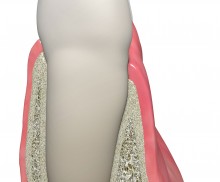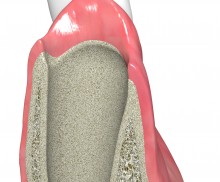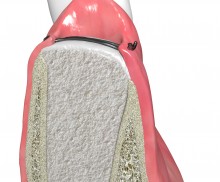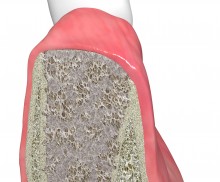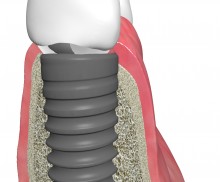Socket preservation - delayed implantation
|

Grafting materials act as an osteoconductive scaffold for the formation of new bone within the socket. An ideal grafting material resorbs at the same rate as that of host bone formation; this ensures the volume stability and prevents the ingrowth of soft tissue without causing a delay of the healing process. Due to the presence of preserved collagen, the allogenic maxgraft® granules are characterized by a very high regenerative potential and are completely remodeled into the patient’s own bone within a time period of only ~3–4 months. Therefore, allogenic granules are the best choice for a delayed implantation. Bovine bone granules (cerabone®) or synthetic particles (maxresorb®, collacone® max) may also be used, but generally do not show complete osseous regeneration at 16 weeks post extraction.
"Socket preservation" typically refers to the filling of a socket with intact bony walls. In this case, the application of a membrane is not necessary, but is frequently performed to prevent migration of bone graft particles into the oral cavity. With the purpose of socket covering, the Jason® fleece represents a more cost-effective alternative to barrier membranes. The collagen fleece protects the socket and grafting material, supports wound healing, and may be left exposed for open healing. Another valid solution is to close the socket with mucoderm®. This native three-dimensional collagen matrix helps maintain the soft tissue contours and, specifically for restorations in the front tooth area, ensures optimal aesthetic results. Alternativley, grafted sockts can be covered with a dense PTFE membrane like permamem® in an open healing procedure. Due to its dense structure permamem® acts as an efficient barrier against bacterial and cellular penetration, and may therefore be left in place for open healing in socket or ridge preservation.
Please Contact us for Literature.
